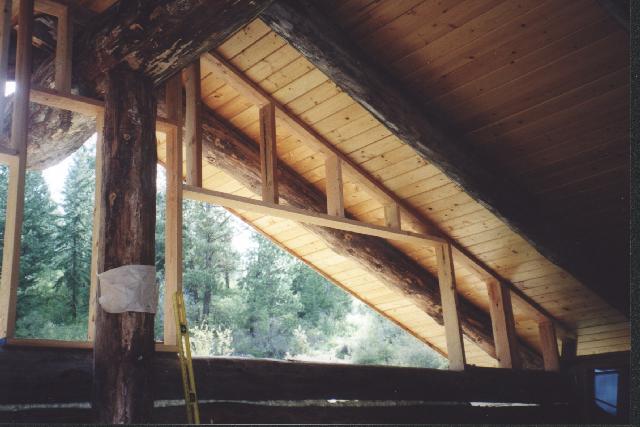
The time had now come to close up the cabin for good and proper. I tried to build doors out of the same TnG material I had used on the roof and second floor but I found that I could not keep them from warping. It turns out that you need to find boards with the grain running across the short axis of the board and not the long axis (quarter sawn). But I could find no such boards. So we mounted standard doors and had done with it.
The gable walls in this design are not load bearing so we don't have to worry about headers above the windows although if I'd had the space I probably would have put them in anyway. The purpose of the wall is really just to keep the birds from flying through and to hold the windows up. I used 2x6 on 24 inch centers but you can see that framing around logs can make such exactness seem like madness.
After having been wide open to the sky for so long, the birds took awhile to get used to the fact that they couldn't fly through anymore.
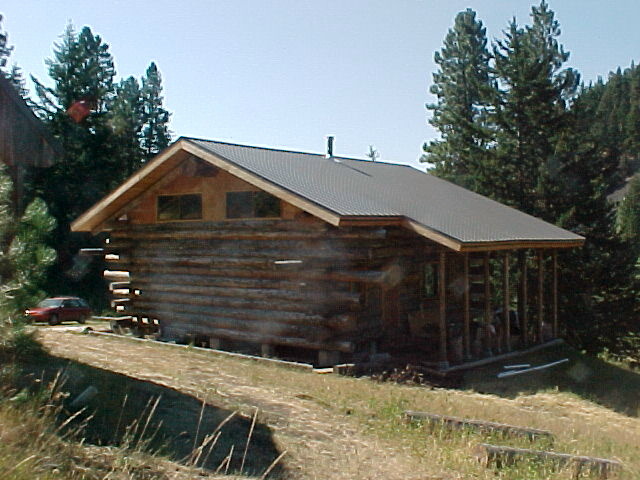
I skinned over the outside of the framing with exterior grade plywood cut as closely as I could to the ridge pole and top wall logs. I put cedar shakes on the outside eventually. I'm not worried about shakes up on the gables from a fire danger point of view. If the fire gets that far, the shakes are the last thing to worry about.
You can also see our new chimney in this picture. I learned, to my dismay, that I should have put the chimney in while I was putting the roof on. With normal metal roofing this is not an issue, but with snap lock roofing, the screws are hidden and you have to take up half the roof to get to a center panel. I was most worried that the snow would shear the chimney off when it slid off so I knew I wanted to mount the chimney as high on the roof as possible. It ended up about 4 feet farther uphill than it would have been had it been directly over the wood stove. But that allowed us to put the flashing up under the ridge cap, so it was not necessary to pick up any of the panels. I killed two birds with one solution but I ended up with an offset in my chimney inside the house. So I tell everyone that, "More heat gets out that way you know."
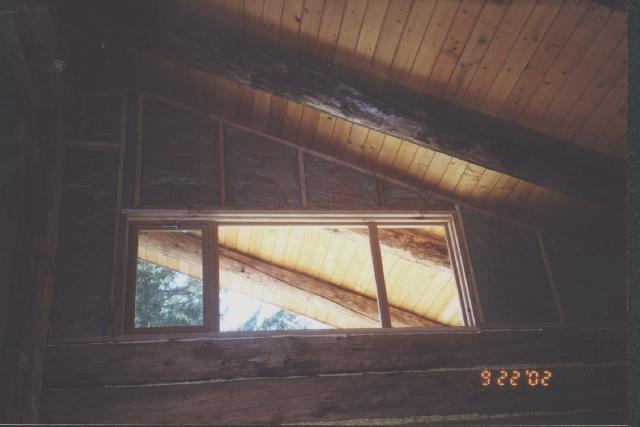
Add a little R-19 insulation with a moisture barrier and Voila! I used the polystyrene expanding foam to make a seal against the logs and to fill a few of the smaller weird shaped spaces. Make sure to only use one moisture barrier (in the picture I have craft paper and plastic but I torn the plastic off, eventually). With two moisture barriers you can get problems with condensation in between them, just inside the interior wall.
Of course, this suddenly made the interior of the house very dark and we began looking for ways to brighten things up a bit.
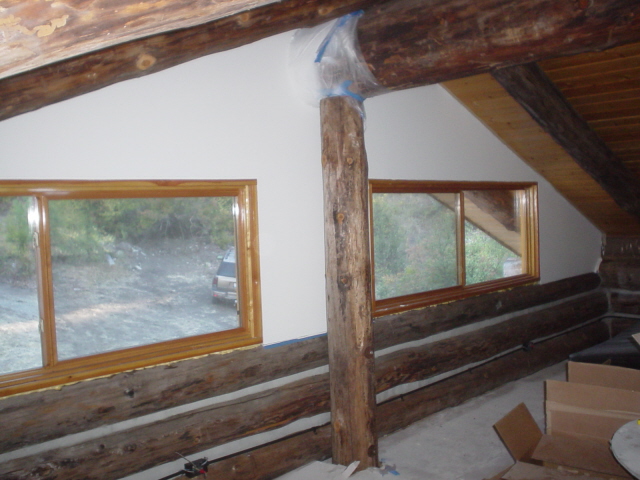
We did our interior walls including the gable ends with sheetrock painted white to increase the amount of light in the house. Wood paneling would be nice but we've got plenty of dark woody spaces as it is and we'll need the light more.
I was able to find a man that lived close by to do the sheet rock and painting. He was very big on taping off all the logs so they wouldn't get any over spray.
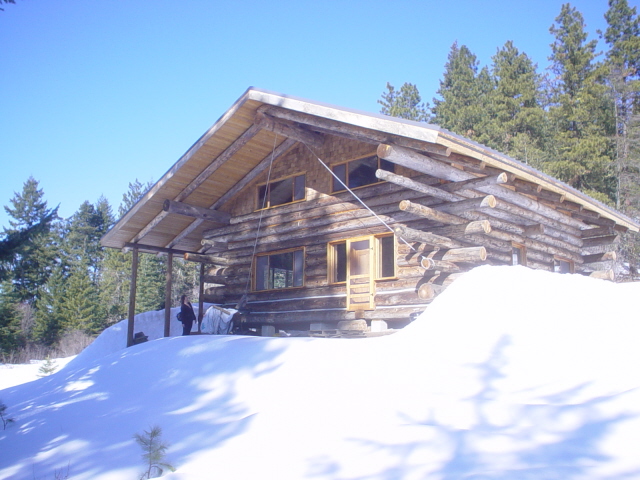
We used cedar shakes to finish our gable ends. It is more common (and easier) to use a board and batten technique. Board and Batten involves using wide planks (often rough cut) mounted vertically with a small gap between each (1/2"). Then these gaps are covered by smaller boards (battens) also mounted vertically. The boards and battens are only nailed down the center line so that they can expand and contract without cracking. You might also take notice of the snow shedding capabilities of our snap lock roof. Without any screw heads sticking up to hold the snow, it all slides off even with a shallow pitch roof. Of course, one of the things we hadn't counted on was that these piles of snow would get so large as to engulf the lower overdangles. I don't want those rotting so I'm going to have to figure out some way to protect them, hmmmm.....